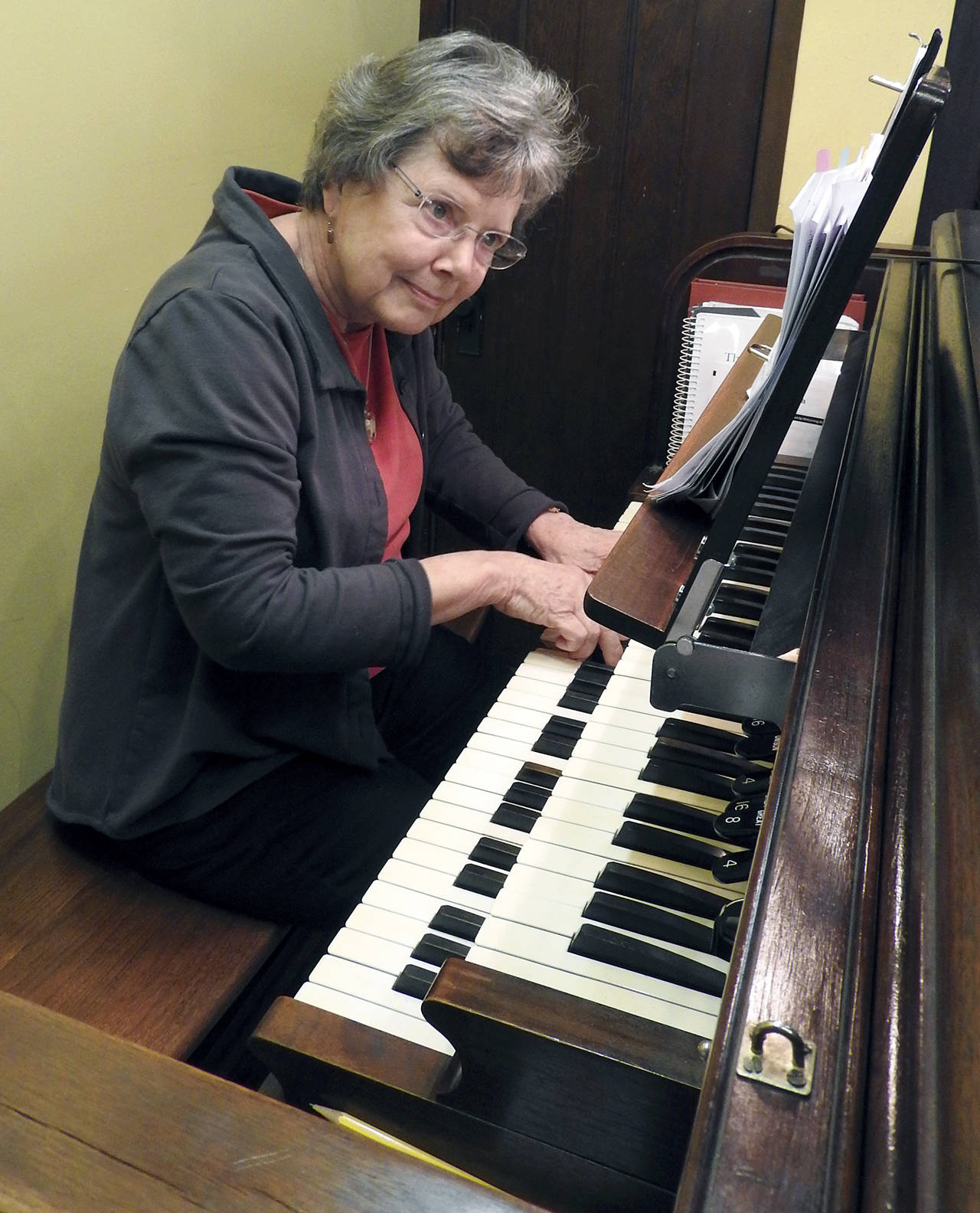By Kat Bryant
Grays Harbor News Group
Merry Jo Zimmer will channel the Phantom of the Opera on Saturday evening at St. Andrew’s Episcopal Church in Aberdeen.
Zimmer, a local music teacher who’s been the organist at St. Andrew’s for 29 years, will play “Toccata and Fugue in D Minor” (the thunderous piece commonly associated with the Phantom) and lead tours of St. Andrew’s historic pipe organ, which she calls the “king of instruments.”
The program, which begins at 7 p.m. Saturday, will cover the history of the complex instrument and explanations of its parts and how they function. Zimmer will play musical selections to demonstrate each function, ending with her performance of the “Toccata and Fugue.”
After that, she will lead a “pipe crawl” through the cramped pipe chamber, which is hidden behind a massive screen in the wall. A wine and cheese reception will follow in the Parish Hall.
The event is free, though donations will be graciously accepted. Zimmer’s two CDs of pipe organ music also will be available for sale during the reception.
“Maintaining musical instruments at St. Andrew’s — pipe organ, three pianos and a set of handbells — is expensive,” she said, adding that all proceeds from Saturday evening will serve that purpose.
This all came about because of a personal challenge.
“About two years ago, a good friend at St. Andrew’s asked me to play the Phantom (music). He thought it would be a cool postlude some Sunday after church,” said Zimmer. “I said, ‘I won’t. Ever. It’s beyond my abilities.’
“What I didn’t tell him was that, like all pianists converted to organists, I had secretly played the music over a period of years — always when there was no one in the building to hear my noisy and amateurish attempts. In fact, I owned four different editions of the piece!”
When that friend became ill, Zimmer decided it was time to get serious about playing it for him. With help from another teacher, she practiced the piece religiously until she felt confident enough to perform it in public.
Well, mostly.
“I feel like I’m in a little over my head!” she said with a smile. “But I’ve learned a lot and look forward to sharing that knowledge with people who enjoy pipe organ music — and with people who might be curious about the instrument.”
St. Andrew’s is located at 400 E. First St., Aberdeen. Call 360-533-2511 for more information.
* * *
Musical notes
The “Toccata and Fugue in D Minor” is most commonly attributed to J.S. Bach, the 18th century composer and organist, although some musical scholars question this origin. Musical tradition holds that Bach developed the piece to test newly constructed organs because it requires the instrument’s full range, but the exact date of the famous composition is uncertain.
Lost to the public for generations after Bach’s death in 1750, the piece was resurrected by 19th century composer Felix Mendelssohn in 1833. The composition, with its dramatic opening, was widely used in the era of silent films to announce impending supernatural events.
It was featured in Walt Disney’s 1940 film “Fantasia,” but became most popularly associated with the fictional Phantom following its use in the 1962 film adaptation of Gaston Leroux’s novel “Phantom of the Opera” — and later in the Broadway play of the same name.
— Information provided by St. Andrews


